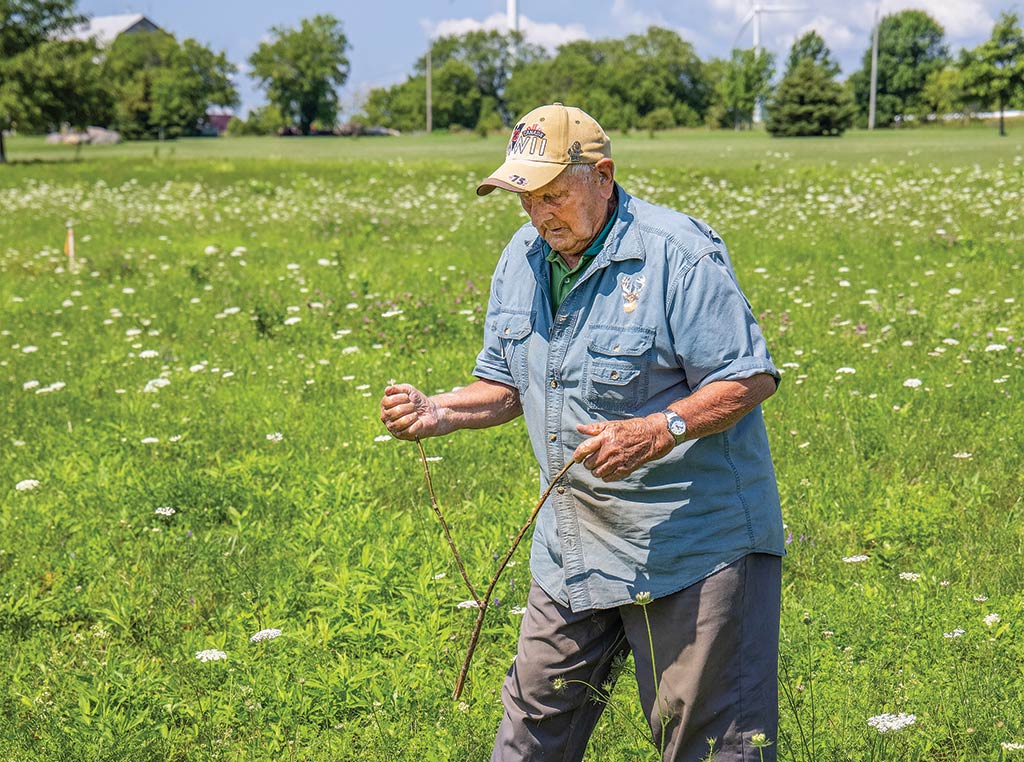Agriculture January 01, 2022
The Water Witch
John Posthumus has been dowsing water wells for over 60 years.
Need a new well? Get in line! Drought and acreage development are driving a surge in demand for new water wells across North America. Some are turning to dowsers to find one.
Dowsers, also known as water witchers and diviners, use forked sticks or two metal rods to find water. Some swear by it, others say it doesn’t hold up to scrutiny. But according to the American Society of Dowsers website, they’ve been doing it for thousands of years. There’s an 8000-year-old painting of a man holding a Y-shaped stick in the Tassili Caves in northern Africa.
Most rural people have heard about dowsers and water witchers all their lives, but few have ever seen it being done. So, watching John Posthumus, a 97-year-old water witch and a retired farmer in Wolfe Island, Ontario, at work was a rare privilege. He’s been using a Y-shaped stick to find wells for hundreds of Ontario farmers and homeowners for more than 60 years.
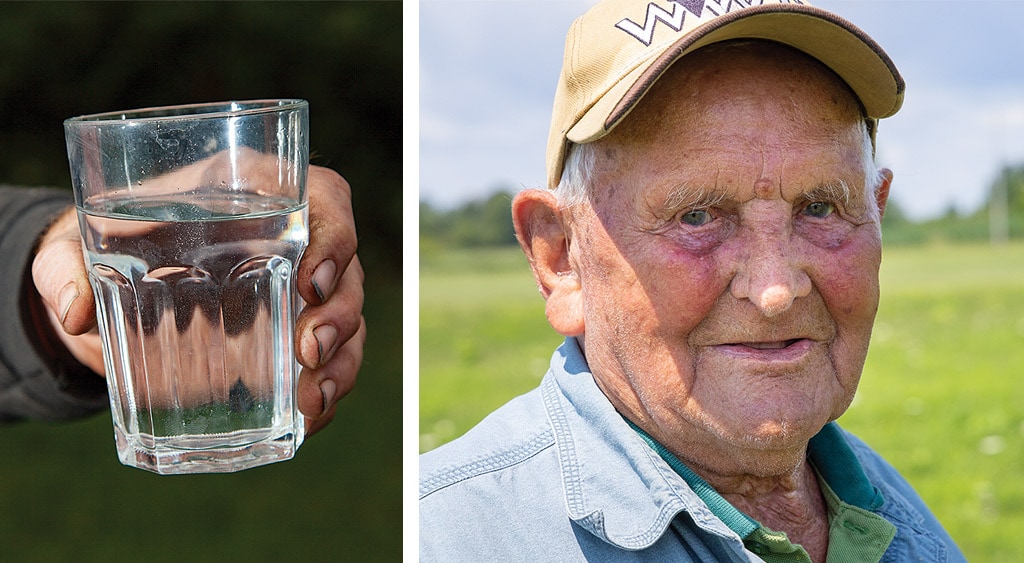
Above, right to left. Posthumus can witch for water with both metal rods or a Y-shaped stick. He says the ability comes from something inside you. Photo of John Posthumus.
“I first saw someone doing it (witching for water) back in Europe at the end of the war,” Posthumus says in a soft voice that still carries traces of his Dutch heritage despite living in Canada for 70 years. “I thought it was interesting and started witching for water just for fun. The ability comes from something that’s in you. If you have it, your skills will improve with practice.”
The first thing he does when he arrives on a location is to ask about other wells in the immediate area so he has an idea where to start looking. If there are no other good wells in the area, don’t expect miracles.
Prefers wood. “I have a set of steel dowsing rods, anything works for me, but I prefer to use wood,” Posthumus says. “Normally I’ll use a fresh birch or apple branch because they have smooth bark. They aren’t as hard on your hands when the stick starts twisting in your hands.”
Posthumus’s face becomes a mask of concentration when he starts searching for water. While some dowsers recommend holding the stick in a light grip, John says it works better for him if he grasps it as tightly as possible. He steps forward and plants one foot firmly on the ground and then swings the stick in an arc in front of his body. Then he’ll raise his other foot and move forward a step before swinging the stick back the other way. When he comes across a vein of water, the stick will bend towards the ground. After he finds the first vein, he’ll always try to find a second cross vein. It doubles the chances of finding water.
While Posthumus had first started dabbling with water witching right after World War II he really didn’t to do much of it until he started to look for more water on his own farm in the early 1960s. Prior to that he’d been getting by with a hand dug well but it quickly became obvious it would no longer meet their need when they bought more cattle.
“I had a horrible time trying to find water,” Posthumus says. “I witched everywhere close to the farm and couldn’t find good water. I brought in a fellow from Toronto who had all kinds of specialized equipment to find water but he had no better luck than I did. Some places just have no water, and you can’t find it no matter how you look for it. Our farm turned out to be one of them.”
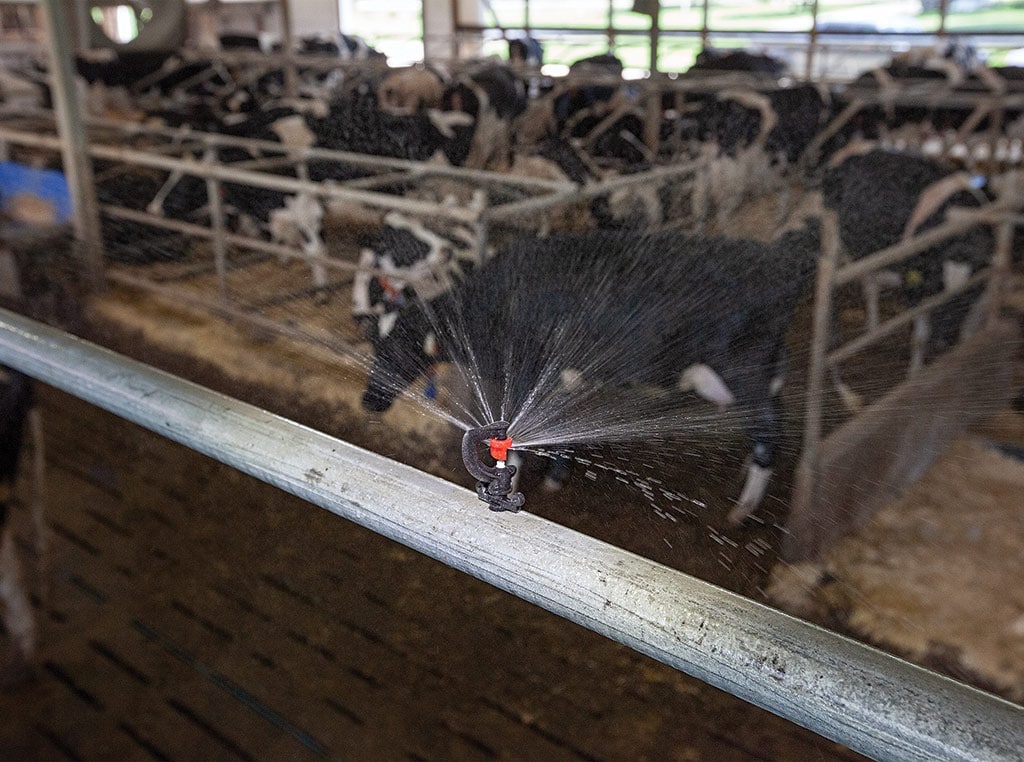
Above. Posthumus had a terrible time trying to find a well for his farm. It was unfortunately located in an area without much ground water. He finally found a well to meet his needs 1,660 feet out in a field.
Eventually he found water 1,660 feet away from their yard out in one of their fields. It was sitting on top of the limestone bedrock like many of the shallow wells on the island. They were notorious for running out of water in hot, dry summers. Fortunately, it was in a spot where the soil was 20 feet deep. So, they dug a big hole, put in a cribbing and got their water from there. It was a long and expensive search for water but Posthumus says he learned a lot about witching for water doing it. He’s been using those skills to help others ever since.
Several years ago Dennis O’Shea of Kingston, Ontario, tried his hand at dowsing for water on a plot of land he was inheriting. He found a spot and marked it with a rock since he was unable to drill at the time.
Water pouring in. “I was ready to drill this year so I had John Posthumus come over to see what he could find,” O’Shea says. “He found the same spot we had earlier and told us we’d find water at 40 feet. The well driller hit water at 140 feet. The water was under so much pressure it started to force the drill out of the hole. The flow rate was tested at more than 30 gallons a minute. If you put your ear on the well casing, you can hear the water pouring in.”
Does it really work? The National Ground Water Association’s position is it “strongly opposes the use of water witches to locate groundwater on the grounds that controlled experimental evidence clearly indicates that the technique is totally without scientific merit.”
Yet it’s hard to dismiss the remarkable success record some dowsers have had finding water. Posthumus, for example, says he has had a 95% success rate finding water around the island. Still, he never guarantees to people that he will find water.
“I know some people don’t believe in it, but there must be something to it,” Posthumus says. “Witchers are finding water for people. If they weren’t, why would people still be hiring them after all this time?” ‡
Read More
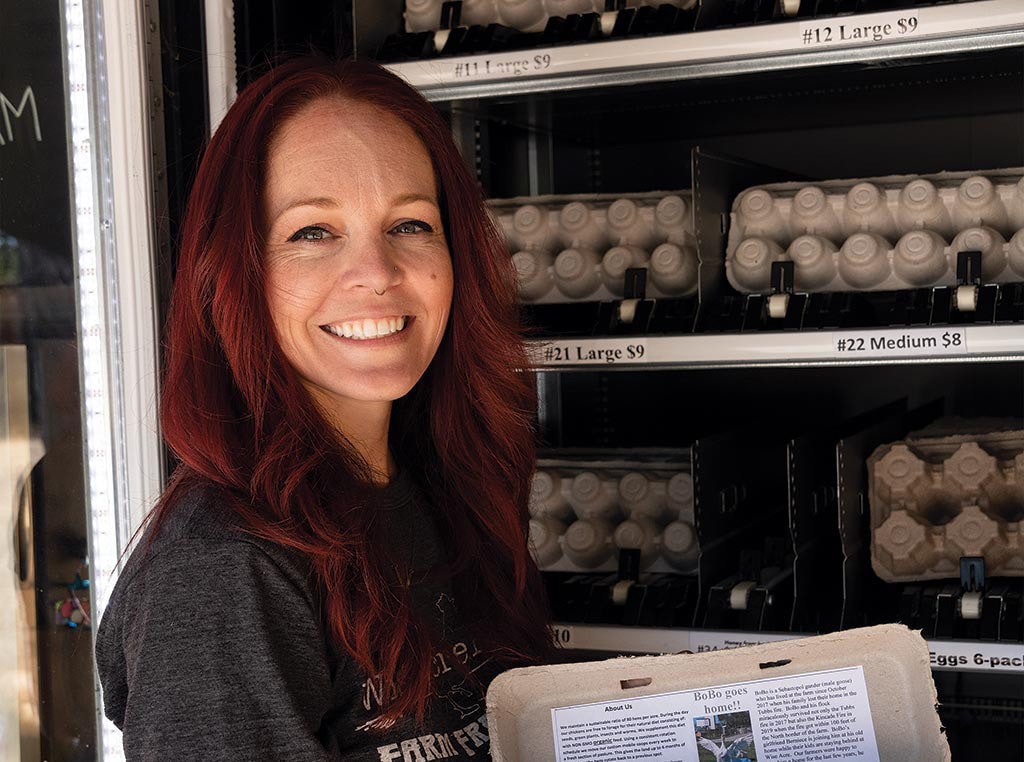
RURAL LIVING, SPECIALTY/NICHE
An Egg from Tiffany’s
Young farmer sells 24/7 through her egg vending machine.
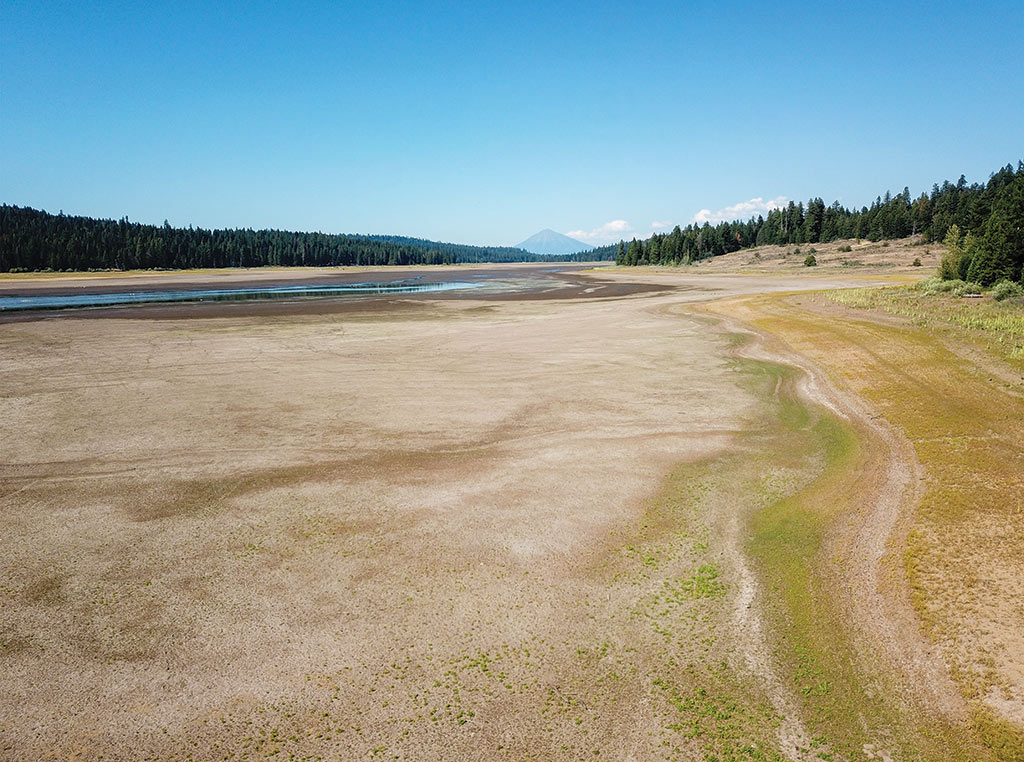
AGRICULTURE, EDUCATION
Dealing with Dought
Combining tech and creativity to farm when water is short.

